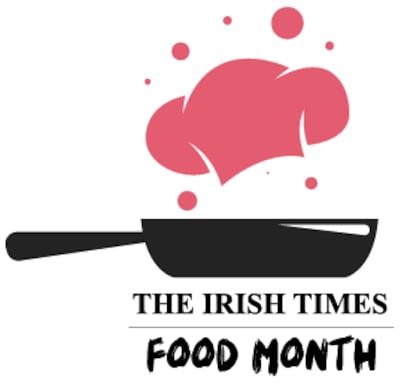At Ashford Castle we try to work with as many Irish producers as possible, but you can replace any of the ingredients with what is available to you. This is a classic winter dish for a special occasion, packed with Irish flavours to put a smile on your face in the cold winter months and the perfect start to kick off the Christmas spirit.

Eugene and Helena Hickey started rearing ducks in the late 1990s, continuing Eugene's family tradition. I like Skeaghanore ducks because they are reared not too far from the sea, close to Roaring Water Bay in West Cork, where the salt air and green pastures affect the texture of the duck, giving it a salt marsh flavour.
Achill Island sea salt, Ballymakenny potatoes and Garryhinch mushrooms feature regularly on my menus; the products are full of flavour and the families behind the products work with a great ethos. I recently tried the Drummond House scape sauce and I find it a lovely addition to my dishes.
Philippe Farineau is executive chef at Ashford Castle in Cong, Co Mayo.
Skeaghanore duck breast, beets, mash potatoes, and mushrooms
Serves 4
Ingredients
4 Skeaghanore free-range duck breasts
600g Mayan Rose potatoes from Ballymakenny Farm
200g butter
3 tbsp Drummond House garlic scape sauce
2 shallots, sliced thinly
1 red apple, diced
1 cinnamon stick
6 juniper berries
1 bottle (500ml) Highbank Medieval Cider
8 An Garrai Glas hasselback beets, (baby beets), peeled
250gr Garryhinch Maitake (hen-of-the-woods) mushrooms
150gr crème fraiche
Newgrange rapeseed oil
Achill Island sea salt
Method
1 Peel the potatoes, and simmer or steam until they are cooked. This will take roughly 20-25 minutes. Once cooked, it is important to drain the potatoes very well and remove as much moisture as possible. Make sure you don't overcook them either, as they would be too wet to mash. As you are mashing the potatoes, add the garlic scape sauce, a knob of butter and some salt.
2 For the sauce: Sweat the shallots slowly in a drop of oil, add the cinnamon stick, the juniper berries, and diced apple for a couple of minutes. Add the dry cider and reduce the sauce by half. Add the cream and reduce it again by half. When your sauce is ready (not too liquid and not too creamy) use a spoon to remove the cinnamon and the juniper berries.
3 For the beets: Peel the beets and slice them without cutting them fully to the end, as you would a hasselback potato. Sprinkle with rapeseed oil and sea salt. Cook in the oven at 180 degrees for about 15 minutes. It may take longer, depending on the size of the beets. The tips of the beets need to be crunchy while the middle is still soft and sweet.
4 For the duck: Score the skin of the duck a little so the skin will crisp up when you cook it. Rub the skin with salt and leave to rest for 15 minutes; the salt will remove some of the moisture and you will have a crispier skin.
5 Warm up a frying pan, add a little oil and place the duck skin side down. Leave the duck to cook at a medium heat for about 10 minutes, till the skin is golden crispy, then turn the duck onto the flesh side for about eight to 12 minutes depending on how well you want it cooked. Rest the duck for three to four minutes before carving.
6 For the mushrooms: While the duck is cooking, sauté the mushrooms in a little oil, season with salt, and toss in a spoon of garlic scape sauce at the end. Cook for five to six minutes on a medium heat.
7 To serve: Cut the duck breast lengthways in half. Pour the sauce on the plate and place the duck on top of the sauce, add two eets and some mushrooms. Don't pour the sauce on top of the duck as you want to keep the skin as crispy as possible. Serve the remaining sauce in a sauce boat. Serve the mash on the side.
Kitchen Cabinet is a series of recipes for Food Month at The Irish Times from chefs who are members of Euro-Toques Ireland, in support of Ireland’s food producers. #ChefsMeetProducers.










